There are more females than males
In 2015, the total population in the City of Manila reached to 1,780,148, of which 876,687 (49.2%) were males while 903,461 (50.8%) were females. This resulted to a sex ratio of 97 males per 100 females. (See Table 2)
The distribution of the household population by sex changes along with the age group. As shown in the Figure 1, there were more males than females at younger age groups. However, the difference increases as the age increases.
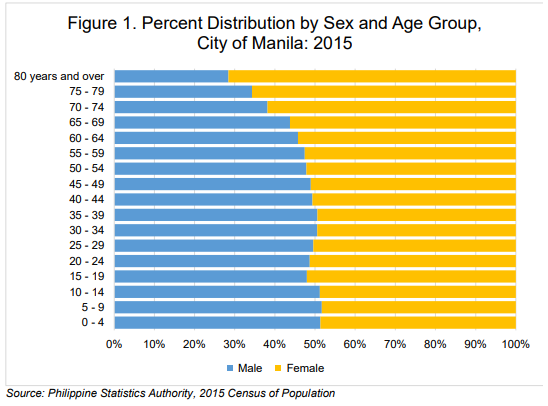
About 71 percent of the declared household head were men
In the City of Manila, the number of household head was recorded at 435,237. The head of the household is an adult member of the household, male or female, who is responsible for the organization and care of the household, or who is regarded as such by the members of the household. (See Table 3)
The result of the 2015 Census of Population showed that it is mostly men (310,050 or 71.2%) who were regarded as head of the household. In Filipino culture, it is always men who dominates and manages everything from home to school and work women are only left at home to do household and serve her husband and children. (See Table 3)
Many women and men tend to marry/cohabitate between ages 30 to 34
Out of 1,412,632 household population 10 years old and over, 657,635 (46.6%) were still single as of August 1, 2015; 656,372 (46.5%) were married or common-law/live-in; and 97,729 (6.9%) were widowed or divorced/separated. The remaining 896 were accounted to those who refused to answer. (See Table 4)
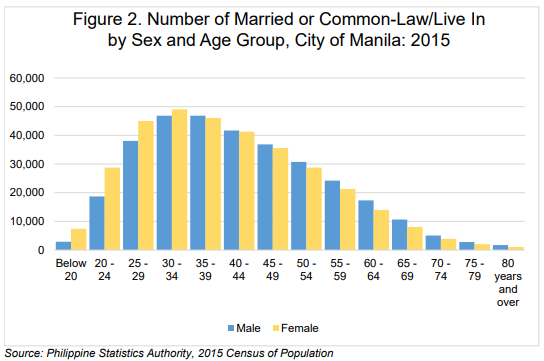
In addition, both sexes mostly married or cohabitated between ages 30 to 34. (See Table 5)
However, for seniors, marrying/cohabitating at ages 60 and up is not yet too late. About 12.0 percent (37,560) of the male population 10 years old and over who were married/cohabitated were senior citizens while among the female population 9.0 percent (29,069) were seniors. (See Table 5)
Seven out of 10 men and women aged five to 24 year-old were currently attending school
The school-age population five to 24 years old was estimated at 683,336; composed of 339,954 (49.7%) males and 343,382 (50.3%) females. (See Table 6)
However, only seven out of 10 men and women age five to 24 year-old were currently attending schools as of August 1, 2015.
More than 2,000 men and women cannot read nor write simple messages
Out of 1,412,632 household population 10 years old and over, 99.8 percent (1,410,170) are literate or can read or write simple messages. The result percentage seems great however, in number, 2,462 individual — 1,256 males (51.0%) and 1,206 (49.0%) females—were identified as illiterate.
Moreover, most of the illiterates (826 or 33.5%) belong to age group 10 to 19 years old.
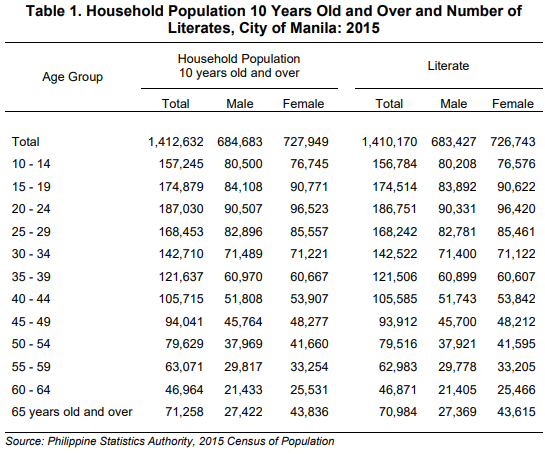
Elementary Occupation and Service and Sales are the most common occupation among men and women
In 2015, there were a total of 745,951 gainful workers aged 15 years old and over in the City of Manila. Most of these are men with 435,349 (58.4%).
Service and sales workers was the most common occupation for both men and women in the city with 190,449 (25.5%); followed by Elementary Occupations with 134,354 (18.0%). (See Table 7)
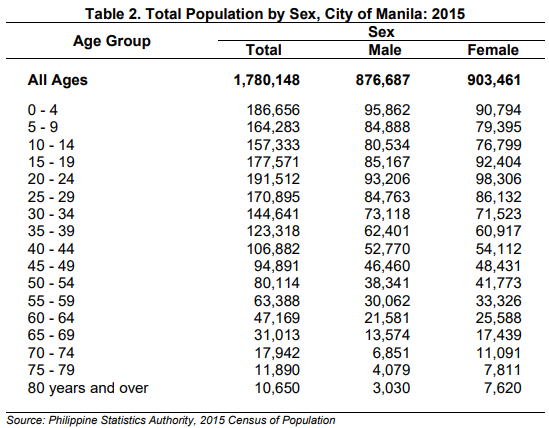

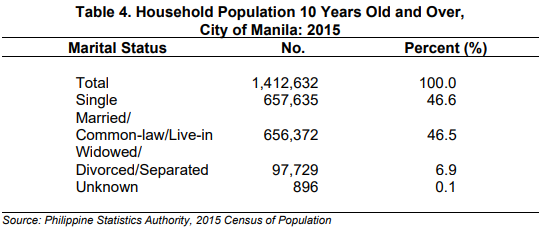
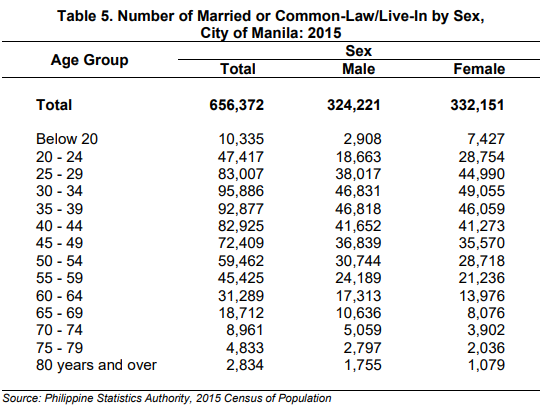
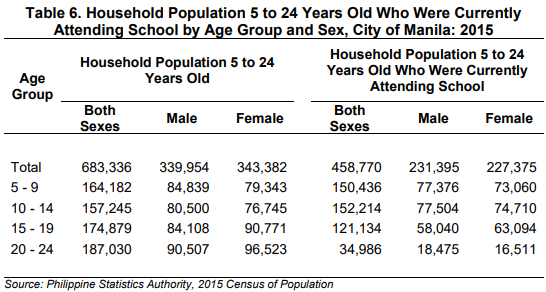
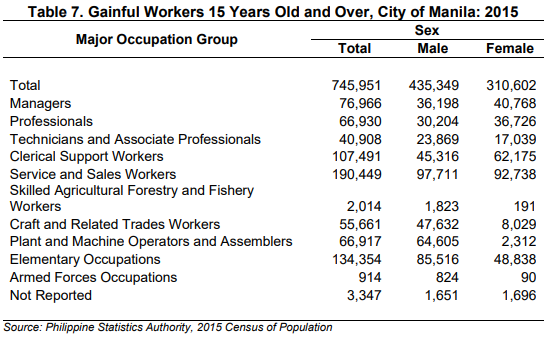
(SGD.) Danilo R. Cubinar
Chief Statistical Specialist
